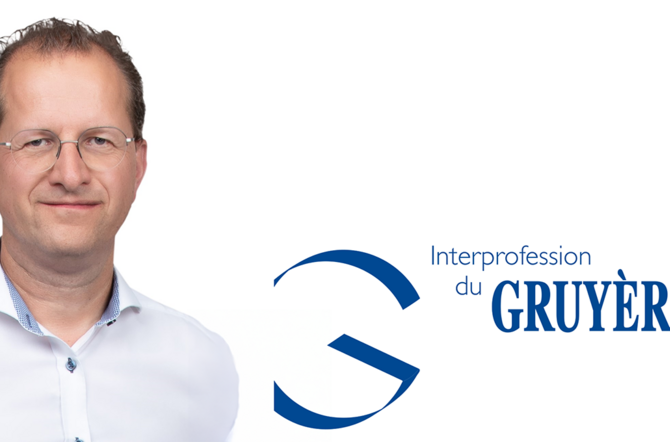Le Crêt: good housing conditions to ensure the health of cattle
In June 2022, farmers Serge and Yvan Ayer inaugurated their new agricultural building in Crêt-près-Semsales (FR), in the presence of an unexpected but welcome crowd of people. After more than a year of use, the two brothers are convinced of the wisdom of their investments.

“Milking is an important time for us: we see all our animals and examine them closely”
Yvan Ayer, milk producer in Le Crêt-près-Semsales
Serge Ayer, what led to your decision to build new premises for your 250 head of cattle?
Serge Ayer: We took over the estate from our father in 2003 and went from producing 110,000 litres of milk annually to 950,000 litres currently. Our buildings were becoming dilapidated, and our livestock was spread across five sites. Suffice to say that my brother and I spent our time foddering without ever seeing each other. It wasn’t satisfactory. Furthermore, one day our sons will take over. It was important for us to give them an efficient working tool and to gather the livestock in one place.
What are the advantages of this new building?
Yvan Ayer: We opted for the open stalling solution to optimise production, operating processes, and comfort for the cows. Lit by daylight and well ventilated, our cowshed complies with the standards and promotes animal well-being. It provides several spaces: free circulation areas and rest areas, accessible at any time. We also have an infirmary for cows that have just calved and a distribution area for coarser hay to encourage drying off. To store fodder and straw, we chose the joist system, which is both solid and aesthetically pleasing. This allows us to keep in the warmth or the livestock in the barn during colder periods. Hay storage is divided into 5 cells of approximately 1,000 m3. To finish drying the fodder, 3 turbines suck in air which passes under the roof of the building to heat it. This same air is then blown into the cells filled with fodder. It is a heat recovery system. The drying is faster and more efficient this way.
What about the equipment?
Yvan Ayer: We have installed scrapers which clean the floor automatically every 2 hours. This guarantees cleanliness throughout the day. For washing the floors, we use water collected in a 120,000-litre tank. The farm roof will soon be fitted with more than 250 m2 of solar panels. A good solution, but not yet ideal: at 5 am we are not generating all our own power. There are many models with batteries, but they don’t seem to work all that well yet.
Serge Ayer: We also have pellet distributor pipes which balance the feed. A mixer allows us to process hay and grass; it’s good for the health of the cows and the quality of the milk is even better. For milking, we have an installation designed to complete it in approximately 1 hour 15 minutes. This is an important time for us, as we see all our animals and examine them closely, and they all have a name! These modern facilities allow us to produce high quality milk, which is essential for producing Gruyère AOP. As for our calves, they spend between 150 and 180 days on the farm and are fed using the modern feeding machine, which has replaced the can of yesteryear. There are multiple advantages to this: it allows us to use milk that is unsuitable for the production of Gruyère AOP due to its excessive cell content. Also, when the calf ingests less milk at each feed, it is digested more easily and quickly. Finally, we can add colostrum, which will increase its immune defences just after birth. They also eat a little hay and straw.
Is working with siblings always an advantage?
Yvan Ayer: There is definitely a little friction from time to time, but overall, it's a chance to evolve together and to share the satisfaction, as well as the worries. My brother is 13 years older than me. When the family estate was handed over, a friend leased his farm to us. This allows us to support two families. We have formed a farming community, which means we share animals, work, equipment, projects, and investments!
What are your plans?
Serge Ayer: For now, we are enjoying our new working conditions. We were thrilled to present them to interested people during our open days in 2022. Bringing our livestock together in one place, after so many years of work, allows us to take over from each other at weekends. Having Sunday off was unsettling at first, it took a while to get used to it!
In figures:
- 2900 m2 agricultural building for the herd
- 250 heads of cattle
- 110 dairy cows
- 5,500 m2 hay storage
- 5 drying cells






